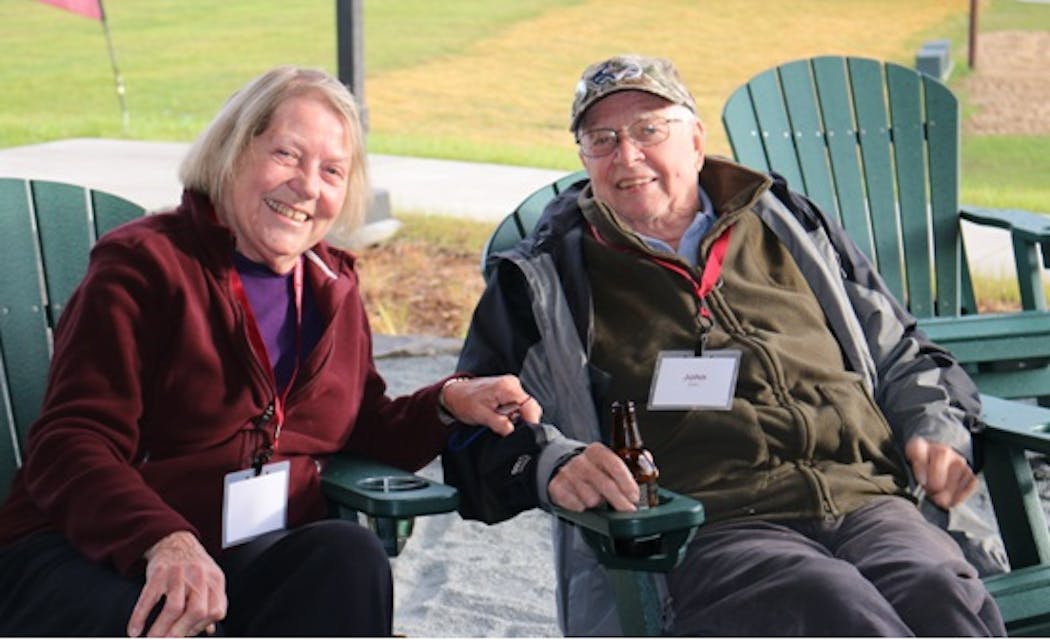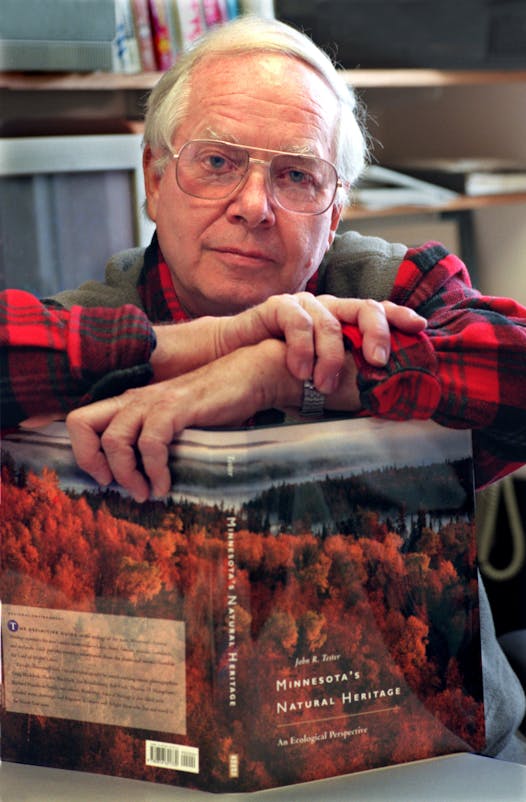Just days after ecologist John Tester married his wife, Joyce, in 1959 they secluded themselves away in a northern Minnesota cabin.
But they had guests, lots of them, on their honeymoon.
"We had the wedding and the reception, and we immediately left for northern Minnesota to collect these toads that were emerging," Joyce recently recalled. "There were hundreds and hundreds of them.
"He brought all the toads in the house. They spread all around the house."
They couldn't walk around for fear of crushing the amphibious horde underfoot. Did Joyce have an inkling her husband was planning to bring the toads indoors to tag and release for a scientific study about their hibernation habits?
"Not exactly," she said with a laugh. "No, I did not know those details. I knew we were going to work on the toads."
Tester died of age-related health problems Nov. 16, two days before his 90th birthday, leaving behind a legacy of environmentalism and education, said his family and friends.
Tester was a pioneering ecologist and University of Minnesota professor who dove headlong into research projects, was early to raise the alarm about global warming, and was part of a Minnesota team that invented real-time radio tracking of animals.
He also wrote a groundbreaking, comprehensive book about the state's ecology, "Minnesota's Natural Heritage," that will be updated and re-released next year on its 25th anniversary.
Carrol Henderson, who retired after serving nearly 45 years as nongame wildlife program supervisor at the Minnesota Department of Natural Resources, said Tester had a unique combination of skills: He was a lifelong naturalist, he understood "the big picture" of how humans, animals and the environment were interrelated, and he applied his skills to research in order to educate the public.
"He had three very special qualities that are very unusual all in one person," Henderson said. "He kind of laid the groundwork for people to be enthusiastic and interested in these other species that are poorly understood."
Curiosity spurred action
Tester grew up in Gibbon, Minn., tagging along each summer with conservation researchers restoring oak savannas in the area.
But Tester, then about 9, wasn't satisfied with just watching. He helped the scientists plant bur oaks in an effort to revive part of southern Minnesota's native biome.
"He just had a curiosity and love of the outdoors and nature," said his son, Peter, deputy commissioner of the Minnesota Pollution Control Agency. "It was just in his blood from when he was a young boy."
Tester earned his undergraduate degree from the University of Minnesota and his master's at Colorado State University. He returned to Minnesota in 1953 and surveyed deer, moose, ducks and pheasants for the Minnesota Department of Conservation, which would become the DNR.
"I was born in Minnesota, so I already had a love affair with the state," Tester said in a transcript of his oral history provided by his family.
He began working for the university's Bell Museum in 1957. In the early 1960s, he was part of a team of university scientists that became the first in the world to track radio-collared animals in real time.
Their breakthrough accomplishments revealed for the first time how far animals like deer and fox wandered in a day, how deep gophers burrowed underground, and where fish swam in the waters of the university's Cedar Creek Ecosystem Science Reserve.
"We would have coffee in the morning and come up with an idea and say, 'Oh, that sounds like a great idea! Let's do that!' " recalled Donald Siniff, who was part of the team. "Everything was new."
In his oral history, Tester credited the many team members for their contributions.
"These people were very innovative and made the project a success," he said.
He also revealed the surprising inspiration for the project — the 1957 launch of Russian spacecraft, Sputnik 2, which carried the first animal to orbit the earth: a dog named Laika.
"The Russians knew a lot about this dog," he said. "They knew its heart rate. They knew its body temperature … So, here is this dog whirling around in space with all this information coming back to Russian scientists."
Tester said the University of Minnesota scientists were compelled to track animals on earth, and began submitting proposals for funding.
"This project did not have a snowball's chance in hell of working, so that was a setback, of course," he wrote. "But we kept going."
The team's work earned them invitations to speak and work around the country and abroad. They used their technology to track polar bears, seals, otters and feral horses. "It was absolutely unique," Siniff said of their work.
Tester's research from that era has been cited in scientific journals as recently as 2010, said Emilie Snell-Rood, an associate professor in the university's Department of Ecology, Evolution and Behavior. Tester helped found the department, where he taught for decades before retiring in 1998.
He was an early advocate for many practices that were novel at the time, including collaboration between scientists and using controlled burns to maintain prairies and forests.
As for those toads? Tester discovered they overwintered underground in large, strange earthen knolls strewn across the landscape called mima mounds.
"They would dig down in the soil and have to live between the descending front line and the water table in the ground, and if the frost line goes too deep, the toads have to enter the water table and they drown," he said in his oral history. "If they do not dig deeper into the water table, they freeze to death so it is a pretty grim existence for them in certain winters."
John Moriarty, senior manager of wildlife for the Three Rivers Park District, spoke to Tester about the research a few years ago before he republished his book, "Amphibians and Reptiles in Minnesota."
"He was doing that [research] in the late '50s and early '60s, but it's still some of the best natural history information that is out there on toad hibernation and toad movement," Moriarty said.
Tester is also survived by his son, Hans, two grandchildren, a niece and a daughter-in-law. A celebration of Tester's life is scheduled for 3 p.m. Jan. 11 at the American Swedish Institute, 2600 Park Av., Minneapolis. Donations can be made to the university's John Tester Itasca Research Fund.
Chao Xiong • 612-270-4708
Twitter: @ChaoStrib
Wednesday's prep sports results
Dallas Stars clinch top seed in Western Conference by getting to overtime against Blues

Joel Embiid scores 23 points, has the big assist as 76ers beat Heat in play-in to earn No. 7 seed
Coby White scores career-high 42 points as Bulls roll past Hawks 131-116 in play-in game



